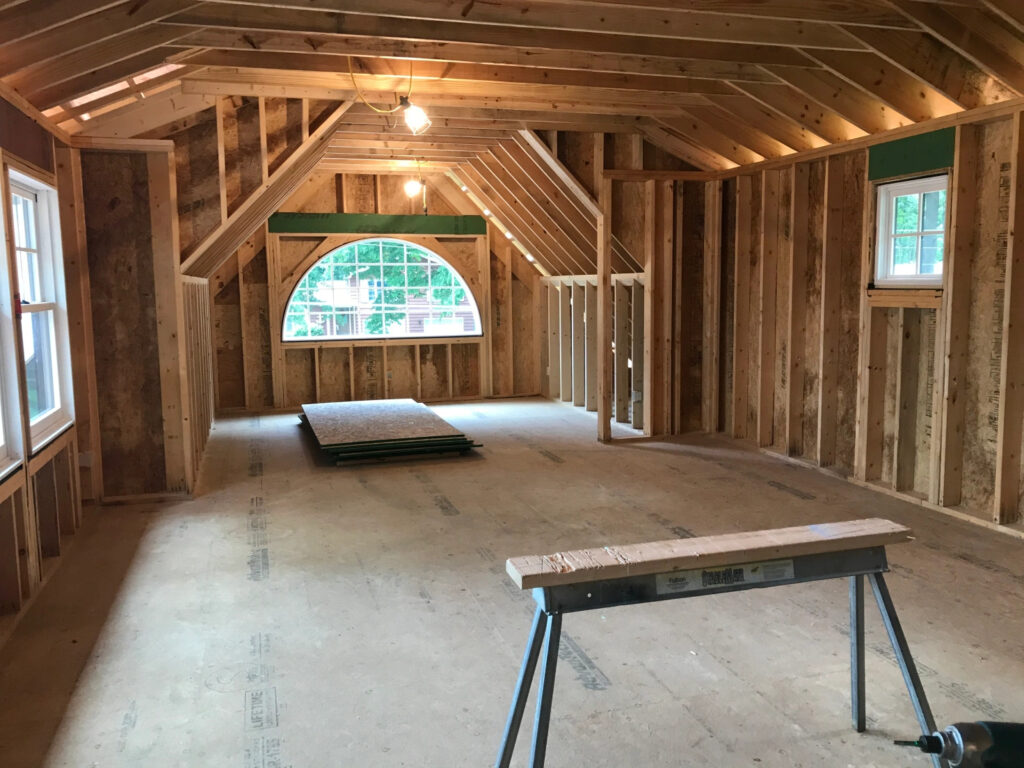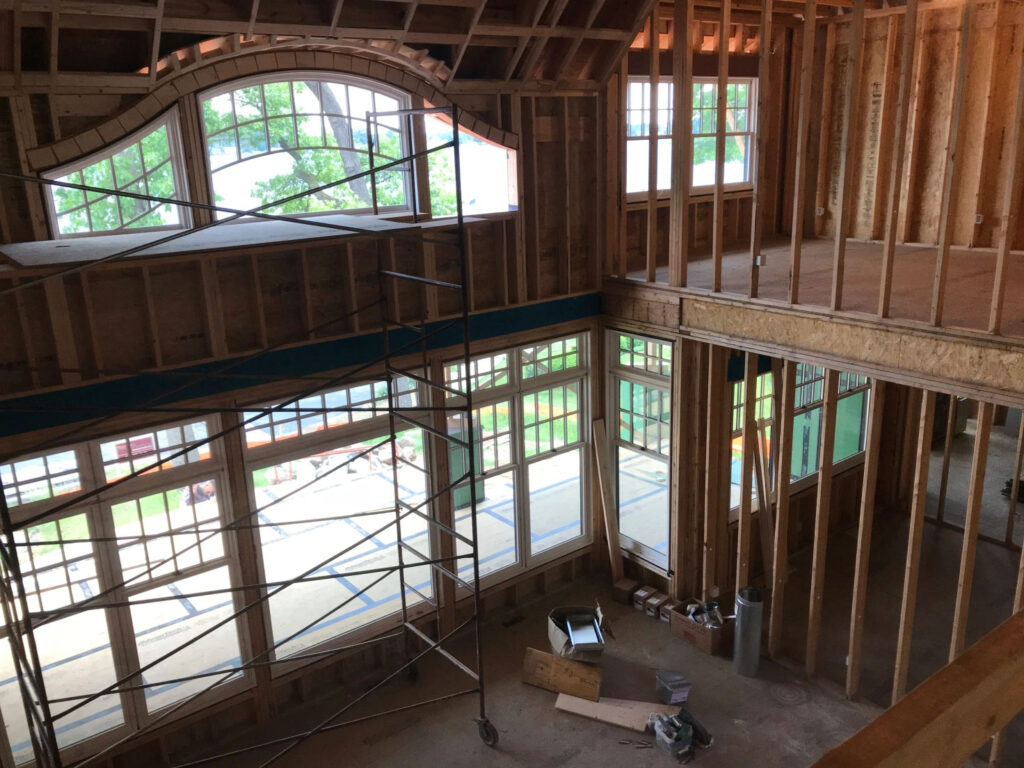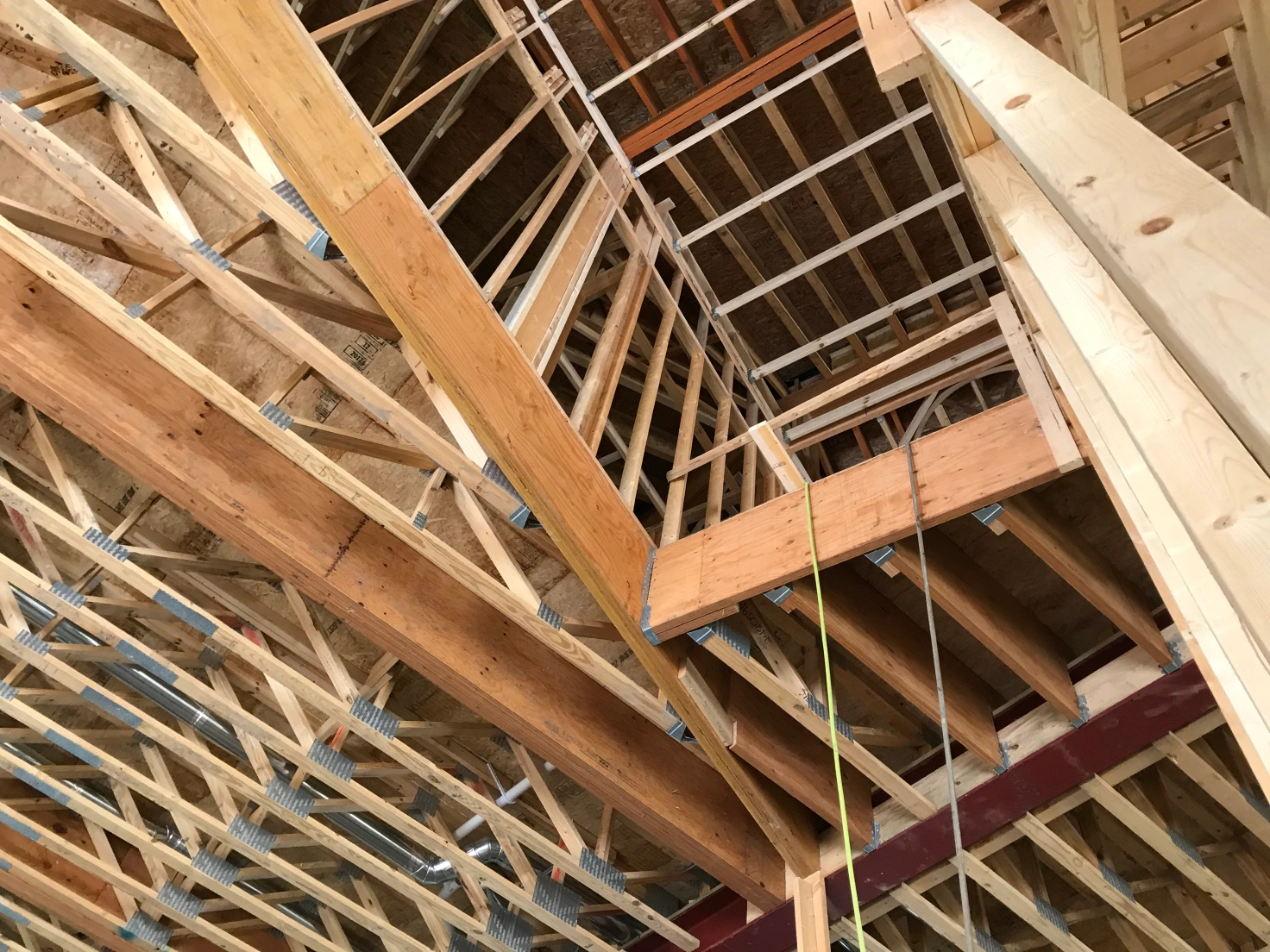The Electrical Walk Through
I’m grumpy this morning, and a little sad. I just saw another beautiful home under construction, and it was too late to save it from bad lighting. So be warned: while I try to keep most of my posts focused on the positive Gift of Light and the five promises that can make our lives better, this post is darker. And stormier. Hey, that’s a good start!
It was a dark and stormy night….
Your new home is now fully framed, a castle of 2×4’s standing on a muddy lot. The roof is on, the windows are in, and carpenters are installing the siding. It is now dry inside, and you are excited to see the interior take shape. The electrician calls and schedules a “walk-through” for tomorrow to discuss receptacle and lighting placement. She’s going to start pulling wire tomorrow and hopes to have the rough-in done by the end of the week. That’s exciting- finishing rough-in means insulation can be installed, and after that: drywall.
Allow me to be the Lighting Prophet of Doom* for a moment. Tomorrow, during that walk-through, you’re going to make a mistake in every room of the house. You will be stuck with those mistakes for decades or have to spend thousands to fix them. You should have been planning for this day about three months ago. I’m sorry to bring bad news.
You are going to be stuck with metal folding chairs in every room.
What?! Hang in there…I’ll explain in a moment.

The next morning you meet the electrician on the site. She walks you through every room, asking where you want receptacles (outlets), if you want ceiling fans in the bedrooms, and where you want the television. She makes notes on the wooden studs where switches will go. And she recommends where to put lighting.
“A room this size? I’d say you need six recessed cans.”
“I usually put a row of cans between the island and the main counter; this will light both areas well.”
“Two recessed cans in a closet this size will be enough.”
“I’d put a recessed can above the fireplace and evenly space six recessed cans in the rest of the great room.”
“We’ll put a ceiling fan with light kit over the bed, and four recessed cans around it.”
Whew. A few hours walking through the house and you’re done. The electrician starts pulling wire to all the locations, and construction continues. $30 recessed cans by the truck load arrive and are quickly nailed up.
The mistake is made. Every room of your house will have lighting based on minimal installation cost and some kind of slavery to ceiling symmetry. Your lighting will have little to do with, well, providing good light.

Let’s go back to folding chairs. Imagine the house is finished. Hardwood and carpet cover the floors. The countertops in the kitchen gleam. Back at the old house, the family is furiously packing up their closets. Your interior designer calls you and says “it’s time for the seating walk-through.”
At the new home, you patiently step through each room as your interior designer helps you plan seating. He recommends where- and how many- seats you need. Except instead of being a real interior designer, he is actually just a seating installer. He wants to do it quickly, efficiently, and for the lowest cost possible so his bid will be accepted. Like the electrician.
“A room this size? I’d say you need six folding chairs.”
“I usually put a row of folding chairs behind the island and a few by the main counter; this will suit both areas well.”
“Two folding chairs in a closet this size will be enough.”
“I’d put six folding chairs by the fireplace and evenly space four recessed cans in the rest of the great room.”
“We’ll put a ceiling fan with light kit over the bed, and four folding chairs around it.”
A truck load of $30 metal folding chairs arrives the next day, and your interior-designer-electrician starts installing the chairs in each room. Later on, when you move in, you’ll realize that this was not the best approach. Unfortunately, all of those metal folding chairs are permanently wired in to the floor. To make a change, you’ll need to rip them up and install new flooring. Exhausted and defeated, you decide (wisely, at this point), to just live with the folding chairs.

No one would do that. No one would fill their new home with $30 metal folding chairs. You know it won’t be comfortable, it won’t be relaxing, that you just won’t enjoy it. But few think twice about filling their homes with $30 recessed cans.
A few days ago I sat with a homeowner just hours after the electrical walk-through. She showed me the plans with little scribbled “R’s” all over, each R representing a recessed can. Sure enough, there were R’s in the kitchen placed precisely to cause shadows on the countertops. They’ll be great for lighting the floor, though. The bedrooms had ceiling fans with light kits over the beds and four recessed cans to light the carpet. The desks, dressers, chairs, and art on the walls? Sorry, we thought lighting the carpet was more important. There were recessed cans carefully placed in walk-in closets that would light the floor and leave the shelves in shadow. There were recessed cans in bathrooms standing by to make shadows under the eyes seem even deeper.
Oops.
Lighting design is not rocket science, nor sculpture. But Light is science and it is art. There is no place in your home for permanently affixed metal folding chairs. Please, do not make the same mistake with light.
*Lighting Prophet of Doom. A few times, when I was teaching at the university, I dressed in black for Halloween and labeled myself as The Professor of Darkness. The alter ego of every lighting designer is a darkness designer. Shadow is half of what we do. But a prophet of doom? Too many people use scare tactics to motivate us to choose better (or more profitable) lighting. “You need to a hire a lighting designer or else you’ll make thousands of dollars of mistakes and be stuck with it for decades.” While this may be true, in general I prefer a language of love- the love of light. “If you hire a good lighting designer, you will increase the enjoyment of your home for decades to come.” Doesn’t that sound better than Prophet of Doom? That’s the Gift of Light.
